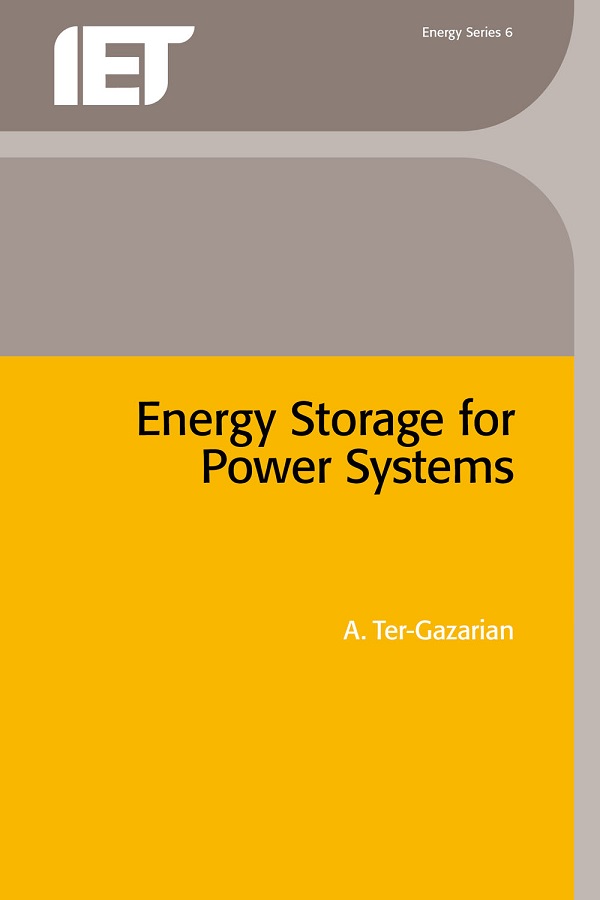- Agricultural Engineering and Technology
- Applied Physics
- Built Environment
- Computing and Networks
- Control, Robotics and Sensors
- Electrical Regulations
- Electromagnetics and Radar
- Energy Engineering
- Healthcare Technologies
- History and Management of Technology
- IET Codes and Guidance
- Manufacturing
- Materials, Circuits and Devices
- Model Forms
- Security
- Telecommunications
- Transportation

Energy Storage for Power Systems
by Andrei G. Ter-Gazarian
Energy flow from many primary sources is not constant but depends on the season, time of day and weather conditions. Energy demand also varies with the same circumstances, but generally in reverse. Obviously there needs to be some way for energy suppliers to separate the processes of energy generation and consumption, by storing energy until it is needed.
Electricity is the most flexible and convenient form of energy for transmission and use but it is not economically possible to store electrical energy in significant quantities. Secondary energy storage systems can accept energy generated by a power system, convert it to a form suitable for storage, keep it for a certain time and then convert it into the form required by the consumer when it is needed. These systems are an essential tool in managing energy supplies.
This book is a comprehensive guide to the various types of secondary storage systems and an introduction to the multidisciplinary problem of choice of their types and parameters. It is chiefly aimed at students of electrical and power engineering, and design and research engineers concerned with the logistics of power supply. It will also be valuable to all those interested in the development of environmentally benign power supplies.
About the Author
Dr Andrei G. Ter-Gazarian MIEEE is a senior research associate at Moscow Power Engineering Institute (MIE) and director general of EI-Project Ltd. During his 15 years at the Department of Power Systems, MEI, he has published more than 40 papers and holds ten patents in the field of energy storage applications in electrical power systems. He is now involved in the decentralisation of Russian power utilities.
Publication Year: 1994
Pages: 244
ISBN-13: 978-0-86341-264-6
Format: HBK
